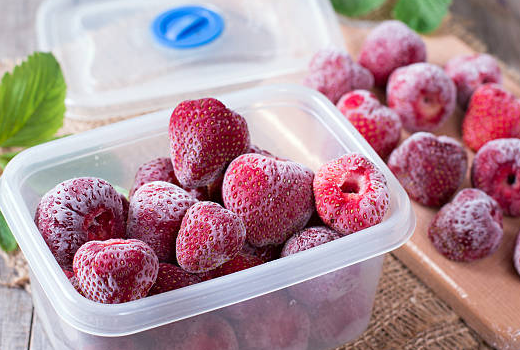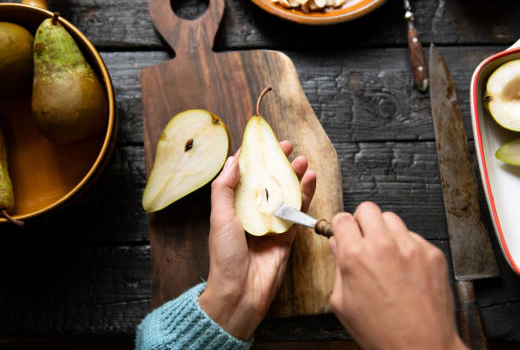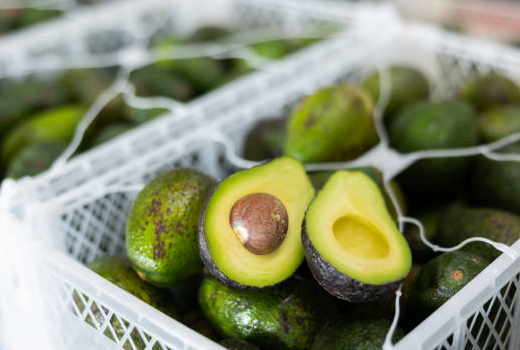Freeze Strawberries to Enjoy Classic Summer Flavor All Year Long

How to Safely Light a Gas Grill
April 28, 2025
Ritz Crisp & Thins Cream Cheese: Indulge in a Delightfully Light and Flavorful Snack
April 30, 2025You’ve got a fantastic strawberry harvest (or hit the farmers market hard!) and have spent the summer enjoying fresh strawberry recipes. Now you’ve got plenty of berries left over—what should you do with the surplus? Luckily, freezing strawberries is an excellent way to preserve your bounty far beyond the fleeting summer season.
You can freeze strawberries with or without sugar for future use in frozen smoothies, baking, sauces, and more—we’ll show you how.

How to Freeze Strawberries
The most common method for freezing strawberries is to flash-freeze them whole without sugar (also known as the dry pack method). There are also ways to freeze strawberries with sugar, which we’ll cover later.
Step 1: Wash and Dry Strawberries Before freezing, thoroughly wash your strawberries. Place them in a colander and gently rinse them under cold water before hulling them. (If you hull them before washing, more water will seep into the berries, affecting texture and flavor—and nobody likes watery strawberries!) Next, carefully lay the strawberries in a single layer on a tray or baking sheet lined with paper towels or a clean, lint-free towel. Pat them dry with another clean towel or allow them to air dry.
Step 2: Freeze Strawberries Place the whole strawberries on a dry baking sheet and freeze until solid—a few hours should do the trick. This allows the berries to remain loose, making them easy to measure and thaw later.
Step 3: Package Frozen Strawberries for Storage Transfer the frozen strawberries to a freezer-safe container. Reusable silicone storage bags are an eco-friendly way to store frozen strawberries, but you can also use regular food storage containers or plastic sandwich bags. Leave a little space at the top of the bag or container, as the strawberries might expand. Label the bag or container with the name of the fruit and the date it was frozen.
Lay the strawberry bags flat in your freezer. You can also place the bags on a tray or baking sheet first to ensure an even surface. To ensure the strawberries freeze quickly, place the bags or containers in your freezer in batches, leaving space around each one for air circulation. Once the strawberries are frozen solid, you can stack the bags or containers.
How to Freeze Strawberries with Sugar
You can also opt to sweeten your strawberries before freezing them. Place small quantities of whole or sliced strawberries in a freezer bag or container and gently sprinkle sugar over them. Repeat this process, leaving a little space at the top of the bag or container. Cover and let stand for about 15 minutes, or until the strawberries are juicy. Seal the container and freeze the strawberries as instructed above.
How to Freeze Strawberries in Syrup
Packing fruit in syrup is also an easy way to prepare and freeze strawberries. Using our canning syrup recipe, select your preferred type of syrup and pour it over the berries in a freezer-safe container.
Tip: When freezing strawberries, be mindful of headspace in your containers. If using a sugar-free pack, leave at least half an inch of headspace. For sugar or syrup packs, use freezer containers with wider tops; allow half an inch of headspace for pint-sized strawberries and 1 inch for quart-sized strawberries.
Using Frozen Strawberries
Frozen strawberries tend to lose their shape and release some juice when thawed, so it’s best to thaw bags of strawberries in a pan or bowl in case the bag leaks. Since frozen strawberries lose some of their plump form, they are best suited for baking or cooking. Consider using them in delicious desserts, like this yummy Strawberry Rhubarb Crumble Pie. Feel free to add them to your morning smoothies or refreshing happy hour drinks. You can also skip freezing them whole and make a delicious frozen jam directly.



